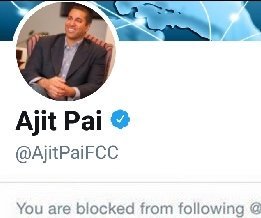My name is Kylee Martens and this is my COMM 106 Final. Enjoy at your own risk.
Don't wanna be here? Send us removal request.
Text
Hello Professor!
Hopefully you’re having a good day. I also hope you enjoy the following blog I’ve made.
Below are the following: Re-edited essays #2, #3, and #4 as well as my midterm essay and Two newly written essays on Fake News and Encoding/Decoding
Have a great break! -Kylee Martens
2 notes
·
View notes
Text
Fake News (2 of 2 New Essays)
Fake News is literally everywhere you turn.
It can kind of happen in two ways. One way is that one users information is wrong (without them knowing) and they spread that information to others. The other way is when someone intentionally spreads misleading information to slander something or someone.

With the power social media gives us to spout opinions in a number of different ways, this happens way more than it should.
And you know exactly what I’m talking about. You’re scrolling through Facebook and you come across a title with an outrageous title! These are actual examples of articles that were posted to Facebook: “Woman Arrested After Defecating on Boss’ Desk After Winning the Lottery”, “Cinnamon Roll Can Explodes Inside Man’s Butt During Shoplifting Incident”, and my personal favorite, “Trump Offers Free One-Way Tickets to Africa & Mexico for Those Who Wanna Leave America”.

The author of the boss-defecation hoax is a comedian who goes by the name Dave Weasel. When BuzzFeed News interviewed him back in May, he estimated roughly a third of the people who shared the desk deuce hoax believed it to be true. “Most of the people that share it do not read it,” he said. After Weasel’s site was shut down by Facebook due to the Fake News craze, Weasel replied with these tweets: “Facebook shut down my satire page today, mislabeling it as Fake News. It was listed on FB as an 'entertainment website' with a disclaimer… Satire ≠ Fake News. Don't blame me if you believed the stories, blame your mom for smoking meth while she was pregnant with you.” What a guy, am I right?

There are some pretty crazy headlines out there but a lot of us think that since it’s an ‘official’ news article, it’s the truth. A recent survey conducted by Ipsos Public Affairs and BuzzFeed News found that Fake News headlines about the election fooled American adults about 75% of the time. After an outbreak of bad media being spread and an outcry from the public, Facebook recently announced a series of initiatives, and Google has also begun altering search results and removing Fake News sites from its lucrative AdSense program.

A lot of this ‘Fake News’ really bursted with the most recent presidential election, highlighting specifically Hillary Clinton, Bernie Sanders, and Donald Trump.

It’s accounted for that 49% (ALMOST HALF)...

...of all Fake News was all political hoaxes. “One key difference between the top-performing politics and crime hoaxes is that the crime stories were published earlier in the year, with many coming in March and April. In contrast, 15 of the 23 top-performing politics hoaxes were published between September and November. As shown in a previous BuzzFeed News analysis, the top-performing fake and false news stories about the election saw a surge in engagement on Facebook as the election approached.”
In conclusion, Fake News is out there and in our social media bubbles. We all have to be careful not to follow and repeat the trend of Fake News.

0 notes
Text
Encoding / Decoding (1 of 2 New Essays)
Encoding and Decoding sounds like something in a computer programming guide.

I mean, it is, but what we’re specifically talking about is not. This kind of encoding - decoding is brought to you by theorist Stuart Hall.

He talks about how in the encoding-decoding process, there is always this: a sender, a message, and a receiver. The message is the thing that ties the two together. With no message to encode, the receiver cannot decode. It’s entirely a message exchange.

He describes it as ‘the moment of encoding: 'the institutional practices and organizational conditions and practices of production', the moment of the text: 'the... symbolic construction, arrangement and perhaps performance... The form and content of what is published or broadcast' and, ‘the moment of decoding: 'the moment of reception [or] consumption... by... the reader/hearer/viewer' which is regarded by most theorists as 'closer to a form of "construction"' than to 'the passivity... suggested by the term "reception"'. All of that sounds really nice but what does it all mean in simpler terms?

The moment of encoding, for example, is when some type of ad agency places certain images in their ads to evoke certain feelings in the receiver or decoder. In that message is the text. It’s symbolic and how it looks or how it is shown is all on purpose to evoke that feeling to the decoder. Lastly is the moment of decoding where the receiver of the message then decodes all of the messages built into the ad. There is one final step in which our brains decipher the messages and then how we act upon them.
The three main ways we read or interpret media is the preferred / dominant way, the negotiated way, and lastly the oppositional way. The preferred / dominant view is the desired interpretation of the media.

If the decoder is viewing the media, likes what they see and the media makes them interested in their product, their view is the preferred / dominant one. It’s what the ad agencies want, it’s what they expected when they made their commercials.
Another view is the negotiated.

This is when “the viewer acknowledges the legitimacy of the hegemonic definitions to make the grand significations while at a more restricted, situational level. It makes its own ground rules and operates with exceptions to the rule” (Hall, 516).
The last type is oppositional.

This is the type that advertisers want to avoid the viewer of feeling. The oppositional view is when “the viewer perfectly understands both the literal and the connotative inflection given by a discourse but to decode the message in a globally contrary way” (Hall 517).
In conclusion, through encoding and decoding, media has a two way connection. There are also the views that come from decoding the media that has been encoded.

0 notes
Photo
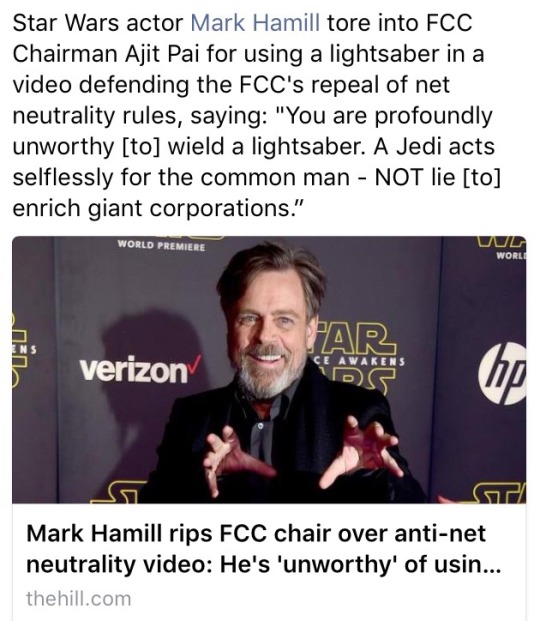
if mark hamill ever talked about me like this id fucking kill myself
139K notes
·
View notes
Text
Commodity-Self (Midterm: Re-edited)
Clothing items we wear...

...books we read...

....and even the type of kitchen utensils we use are all commodities. We then brand ourselves with those commodities. They distinguish who we are from any other person. It works the same way as social media. The minute we make an account for a social media platform, let’s say Instagram for example, we are making an identity through that platform. Now, let’s say that we choose to use Instagram over Facebook. We are then endorsing Instagram instead of Facebook, showing that we like one platform over the other.

I know right? Crazy stuff.
Everyone has their own identity. Through this identity, they can portray themselves however they want. It works the same way for social media platforms and how you use them to portray yourself. You construct your own image through these social technologies and you can have people view you how you want to be seen as. What you post on said social media really then depicts how most others will see you as a person and then through that identity.
In reality, we are all trying to post an “illusional self” so we come off more as artsy...

or outgoing...

...things that everyday we may not be. Through this “illusional self” we represent ourselves in a false way to be seen as something we want to be but are not.

For instance, a lot of people post about how they are going to go workout at the gym. In reality, they only post that to seem athletic when in reality, they are sitting on their couch eating funyuns (for example, just go with it, you know?)
But what they post on and what they are posting about gives them this new “aesthetic” or image that is how they want to be seen as. “All images are subject to judgement about their qualities (such as beauty or coolness) and their capacity to have an impact on viewers. The criteria used to interpret and give value to images depend on cultural codes or shared concepts, concerning what makes an image pleasing or unpleasant, shocking or banal, interesting or boring… these qualities do not reside in the image or object but depend on the contexts in which it is viewed, on the codes that prevail in a society, and on the viewer who is making that judgement. All viewer interpretations involve two fundamental concepts of value-- aesthetics and taste” (Sturken and Cartwright, 56).
Each social media is a little different but they all convey the same point of connecting with friends.
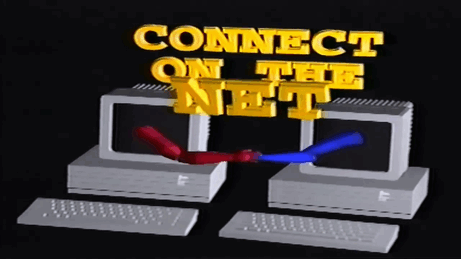
All social media platforms focuses on a few focal points that separates their platform like any other. Snapchat is all about keeping a ‘streak’ with someone, snapchatting them at least once a day, everyday. The higher the number you have with someone shows loyalty.
Instagram is all about getting as many likes on the picture as you can. Having more followers means getting more likes on your picture.
Twitter is all about the ‘retweets’, posting something that is relatable enough that people are willing to repost it to their own page for their own followers to see as well.
They all have different ways of reeling you in and different styles.

Snapchat is more about real-time, what’s happening right now with all of your friends. Then, if you’re doing something fun, you post it so people see you do fun stuff like go to concerts, hockey games with friends, or going out to eat at a fancy resturaunt. You want to look fun and popular on Snapchat. Instagram is all about aesthetic and themed criteria. Most people post pictures all with the same filter so your instagram looks very artistically pleasing. Twitter is different. Since it is not a visually based app, it’s all about text and how that text comes across. If it connects with the audience, the following behind that is larger.
These apps rely strongly on the sense of ‘audience’ and who responds to what, how. That audience is where we (the person posting) gets the satisfaction of a following. When Stokes spoke of an audience, they used it interchangeably with “society” as well. “ But we also use the term [audience] to refer in a broader sense to people who are exposed to or who respond to media culture. Indeed, in its broadest sense, the term ‘audience’ is almost interchangeable with ‘society’, for it is used to refer to the many ways in which the media relate to the broader social world.”
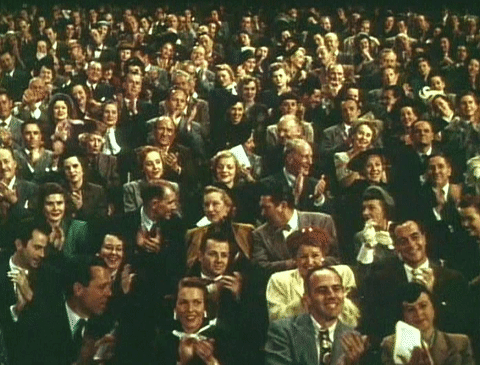
Personally, I do fall in line with the ‘stereotypes’ of media platforms. My Instagram does have an aesthetic, I make relatable tweets to get more likes and retweets, and I have Snapchat streaks. All of these things that make these different platforms distinct from the other is why I am a part of them and why I stick with them. All media forms try to all spread news, entertainment and more, keeping the world up to date no matter what platform you use. “...media, the plural form of medium, refers to the group of communications industries and technologies that together produce and spread public news, entertainment, and information. When we refer to “the media” we usually mean a plurality of media forms (news, entertainment, radio, television, film, the Web, and so forth) and not one entirely unitary industry, though we may mean to imply that the members of the plurality produce a surprisingly homogenous set of messages” (Sturken and Cartwright, 229).
Out of all the media platforms I have signed up for and I am actively a part of, the commodities that make up my commodity self the most would be Instagram, YouTube, and Snapchat.

I use Snapchat to show off the fun times I have with my friends. I love taking pictures and videos (hence me being a media studies emphasis), so this app is perfect for me.

Through what I am posting on Snapchat, those posts make up my identity. My identity is friends, laughing, and having amusing moments with some of the greatest people I’ve ever met. My identity on Snapchat is different from my identity on Instagram though.
On Snapchat, I might post several things to my story a day if I’m with friends and hanging out but on Instagram, I might only post once every few weeks or so. I don’t like to clutter that space and have my profile look messy and crammed with images.
The last commodity that makes up my commodity self would be YouTube. I personally think YouTube is the best way to post original content and also the best way to really see someone’s identity. YouTube has just about everything from DIY decor videos, videogaming, beauty tutorials, vlogs, comedy/skit videos, and videos for educational purposes. Weather you’re one of millions watching or making your own content, YouTube is where it is at. My identity through YouTube is constructed through the YouTube channels I follow. For example, I only follow 12 YouTube channels. Usually people follow several dozens but I’m quite picky. In those 12, I mainly watch ‘Rooster Teeth’ and ‘Let’s Play’, two gaming channels. My favorite channel though is ‘Watch Cut’, a YouTube channel that takes real people and breaks real barriers that most people choose to pretend that don’t exist. One of their top videos and one of my all time favorites is ‘People Guess Who Is A Sex Worker From A Group Of Strangers’.

Kind of a crazy title, I know, but it’s real; and I like to think that myself and my identity is real. It’s been roughly one month since the video has been out and it has 6.1 million views! That’s pretty insane. The concept of being confident and breaking barriers is something that I have in my personal identity so this channel that I am subscribed to shows my commodity self pretty clearly.
If you use social media, you most likely are a part of Instagram. Forbes says, “Instagram’s popularity has been growing steadily since it first debuted back in 2010. With more than 500 million active users, it’s currently the second most popular social media network in the world, behind only Facebook.” The question ‘why is Instagram so popular?’ can be answered with several factors. From its mobile functionality, visual aesthetic, original content material, and simple functions, it is easy to see why Instagram has such a huge following. Another question that can be posed is how is it advertised.
I thought back to why I, myself, found Instagram in the first place and why I am still actively a part in the social media platform. I looked at how I am a part of an audience even though sometimes I feel like I’m in my own world. I feel like Instagram is a planet where only I’m on and seeing everyone else is like they are on their own planet too.
Instagram feels personalized for the person using it since you can follow things you like specifically; like a band you like...

a celebrity you want to keep tabs on...

...or friends and family. No one has the same Instagram feed that someone else might have. It’s all different for everyone. Even the ads placed in your feed is personally selected for you. Instagram pairs up with advertisers to work together to make institutions out of its viewerships. Advertisements then use these institutions to target their customers. It interpellates the viewer, making it feel personal. “Interpellation [in the media sense] is the way images and media seem to call out to us, catching our attention” (Sturken & Cartwright, 50). These advertisements seem to “hail” viewers as individuals even though so many more people are seeing the same advertisement. This makes the viewers feel like the advertisement is “just for me” though it reaches a bigger audience.
Another commodity I am a fan of is Snapchat. I use Snapchat daily and I know I would be almost anxious being without it for a day. It made me question what was magnetizing me towards Snapchat everyday. I decided to take a look at what Snapchat was encoding within their advertising. Encoding is a process done by the advertisement makers while the viewers of the advertisement are the ones decoding the image, video, or text. The relationship between encoding and decoding are crucial to the financial gain of companies using commercials and advertisements to evoke a certain reaction in a consumer. When advertisers want cusumers to use their product (for instance, Snapchat), everything that they put in their advertisement is intentional. The producers want you to feel a certain way so they encode a certain “feeling” in their media. How someone reacts to what is encoded is called decoding. When decoding the messages a company has encoded in an advertisement, Stuart Hall describes three types of ways people can decode an advertisement. The first type of way we interpret media is the dominant type. This is the desired interpolation. This is when “the viewer takes the connotated meaning from a television newscast [or another type of media] and decodes the message in terms of the reference code in which it has been encoded” (Hall, 515). The second type of way is negotiated. This is when “the viewer acknowledges the legitimacy of the hegemonic definitions to make the grand significations while at a more restricted, situational level. It makes its own ground rules and operates with exceptions to the rule” (Hall, 516). The last type is oppositional. This is the type that advertisers want to avoid the viewer of feeling. The oppositional view is when “the viewer perfectly understands both the literal and the connotative inflection given by a discourse but to decode the message in a globally contrary way” (Hall 517).
With Snapchat, their advertisements show young adults having a good time and recording their experiences to show and share with friends. It’s encoding that with Snapchat, you can show off the good times that you’re having with your friends and family. With Snapchat in your phone, it means that you are a supporter of connecting with friends nationally and internationally and are capable of having a good time. A good enough time to post about it and let everyone know what you’re up to.
In conclusion, my commodity self is filled with YouTube, Instagram, and Snapchat the most out of media commodities at least. Through these apps I use, my identity is being displayed to those friends and followers. Each platform is a little different and my “illusional-self” changes with each platform to satisfy those in my viewership. My identity is laughter, friends and fun and I express those within my social media platforms I am a part of.

0 notes
Text
NET NEUTRALITY
Keep it trending. Don’t let people forget about it. This fight isn’t over.
Reblog, like, and post. Do whatever you can. I am not going to give up this easily.
5K notes
·
View notes
Text
BREAKING NEWS: The following states will join New York in suing the FCC to defend #NetNeutrality protections:
-California
-Oregon
-Vermont
-Washington
-Delaware
-Hawaii
-Iowa
-Illinois
-Massachusetts
-Kentucky
-Maine
-Maryland
-North Carolina
-Mississippi
-Pennsylvania
-Virginia
46K notes
·
View notes
Text
Improper Media (Essay #4: Re-edited)
Media wraps us up like a big bubble. Kind of like those giant hamster bubbles but for humans.

Every person has a slightly different central bubble of media but we all have one. Our bubble depends a lot on what apps we use every day to see what others are up to...
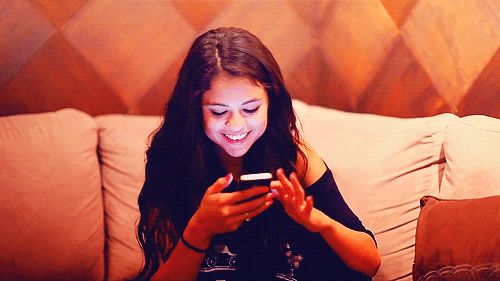
depending on where we live...

and depending where we get our news from.
With that, we gain these kind of ‘media goggles’, where we only see what we see from the medias that supply that information for us. These media sources differ for everyone, meaning that we have a different vision when it comes to our media and also our life. That bubble can sometimes be a good thing but with things like filter bubbles and fake news, our media goggles can be altered from actual reality.

First starting off with the public sphere, German sociologist Jürgen Habermas describes it as an area in social life where individuals can come together to freely discuss and identify societal problems, and through that discussion influence political action.
He also discusses three different kinds of spheres. “These are the private sphere [consisting of family and economy], the sphere of public authority [consisting of state and judiciary], and the bourgeois public sphere” (Devereaux, 109). Social media is the perfect place for the public sphere to happen.

We see celebrities posting all of the time on Instagram, Twitter, etc. about certain causes all of the time because they know they have an influence with their amount of followers. They post how one can donate to a certain cause and with that media platform, they discuss and identify societal problems and then influence action from that.

Going back to our discussion of ‘media goggles’, we also encounter ‘filter bubbles’. The term ‘filter bubble’ was originally coined by internet activist Eli Pariser whom first spoke of the term in his book. Pariser defined his concept of a filter bubble as "that personal ecosystem of information that's been catered by these algorithms". In longer terms, Eli Pariser is saying that an internet user's past browsing and search history is built up over time when that user indicates their interest in topics by "clicking links, viewing friends, putting movies in [their] queue, reading news stories", and so forth.
An internet firm then uses this information to target advertising to that specific user, or make certain types of information appear more prominently in search results pages.

These filter bubbles are easy to live in because the internet is forcing us to blend with people who like the same things and think the same way as the person viewing the content. It’s easier to find people who view the same things as you but you lose having a worldly view of someone who may not have the same views as you. Someone that could challenge your views. The largest concern is that internet users with have no ‘common basis for agreement’ or connection when their flows of information are so polarized. Basically what is happening is that our information is getting segregated based on what we may have past researched or simply Googled and that shouldn’t divide our information unfairly like that.
As well as our information being separated, we are also facing the challenge of ‘fake news’.
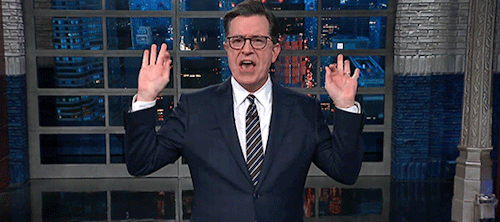
You can’t go through an article about news without something coming up about the topic of fake news. Fake news is literally what it sounds like. News that is fake to deliberately push on misinformation and causes people with that misinformation to go about spreading that fake news to others, mostly via social media. It’s main purpose is for it to be written and published with intent to mislead others in order to damage the public image of something or someone. Recently, it has even been a part of broadcast news media as well, more than ever with the latest presidential election with fake news being slandered back and forth from both parties.

Michael Radutzky, one of the producers of CBS’ 60 Minutes, has said that his show considers fake news to be “stories that are probably false, have enormous traction [popular appeal] in the culture, and are consumed by millions of people”. Big companies like Facebook are working to expel more and more fake news articles from one's’ Facebook timeline. It’s hard to balance how nice it is to report items on social media but also balancing how to differentiate the real from the fake. “The convenience and effectiveness of social media to reach the masses dramatically impacts the way journalists access information” (Devereaux, 289)
In conclusion, recently in the world of social media, we have had several things alter our perception of the outside world because of the segregation of our media due to ‘filter bubbles’ and also the false announcements that ‘fake news’ brings to our media.

0 notes
Text
Vitamin Water (Essay #2: Re-edited)
I won’t be the first one to say that media are not like they used to be. We have gone from newspapers...
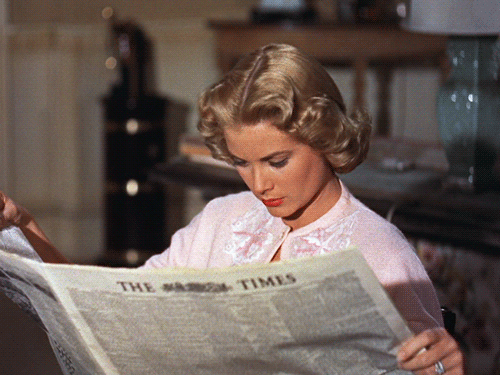
to digital news and from conversing face-to-face to a more mediated approach. At this point, if you look at someones social media profile for just 5 minutes, you can probably find out more about them than you could in a 5 minute conversation.
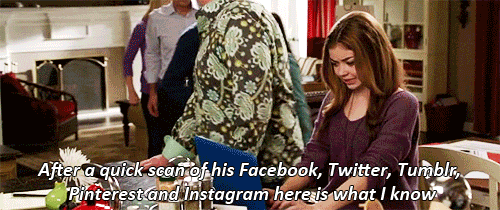
The internet has become a successful medium between verbal communication and media communication. It’s also a key institution in a democracy. Mass media has become one of the biggest social institutions that we know today because it not only works but because it's universal.

Media have assumed many of the previous social institutions like school, church, and family.

Now, advertisements use these institutions as a way to interpellate viewers. “Interpellation [in the media sense] is the way images and media seem to call out to us, catching our attention” (Sturken & Cartwright, 50). These advertisements seem to “hail” viewers as individuals even though so many more people are seeing the same advertisement.

This makes the viewers feel like the advertisement is “just for me” though it reaches a bigger audience. Through this process, the viewers of this advertisement are also decoding the images that have been encoded by the providers of the advertisement.
Encoding is a process done by the advertisement makers while the viewers of the advertisement are the ones decoding the image, video, or text. The relationship between encoding and decoding are crucial to the financial gain of companies using commercials and advertisements to evoke a certain reaction in a consumer.

When advertisers want to sell their product, everything that they put in their advertisement is intentional. The producers want you to feel a certain way so they encode a certain “feeling” in their media. How someone reacts to what is encoded is called decoding.
When decoding the messages a company has encoded in an advertisement, Stuart Hall describes three types of ways people can decode an advertisement.
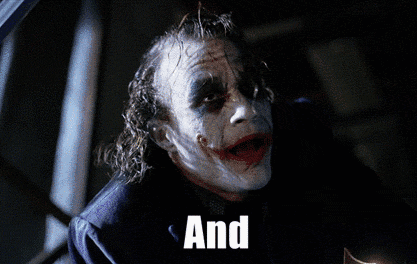
The first type of way we interpret media is the dominant type. This is the desired interpolation. This is when “the viewer takes the connotated meaning from a television newscast [or another type of media] and decodes the message in terms of the reference code in which it has been encoded” (Hall, 515). The second type of way is negotiated. This is when “the viewer acknowledges the legitimacy of the hegemonic definitions to make the grand significations while at a more restricted, situational level. It makes its own ground rules and operates with exceptions to the rule” (Hall, 516). The last type is oppositional. This is the type that advertisers want to avoid the viewer of feeling. The oppositional view is when “the viewer perfectly understands both the literal and the connotative inflection given by a discourse but to decode the message in a globally contrary way” (Hall 517).
youtube
In my media example above, you can see the Vitamin Water commercial. In this advertisement, we see the gym as an institution. Through this institution, it has its own discourses as well. It is like it has its own little subculture in society. It has its own type of people, slang, clothing style, and more.

Companies then build their advertisements around certain institutions that their target audience is in. Vitamin Water, being a brand that supports a healthy lifestyle, targeted their audience of young adults and young adults that workout. They took the gym as an institution and hyped it up using their brand and their product.
In conclusion, mass media are one of the largest social institutions to date. Those who use technology to socialize are part of this huge bubble of an institution. It has taken over previously larger social institutions such as face-to-face communication. Also, we’ve discussed encoding and decoding through advertisements and how the three different ways we interpret media are crucial to companies who then promote their product through commercials and other types of media.

0 notes
Text
WE CAN STILL SAVE NET NEUTRALITY
The FCC may have voted in favor of repealing net neutrality but they still have to make it through Congress.
This isn’t official. Unlike Ajit Pai, the court has listened to the public before and supported net neutrality. We cannot stop fighting. That’s what Ajit Pai wants. You don’t have get off your facebook, deviantart, tumblr, twitter, etc. the vote hasn’t passed through congress yet. There’s plenty of time to keep fighting. Please sign and/or call here: www.battleforthenet.com/ Or text BATTLE to 384387 to let Congress know that we need net neutrality. Spread this message to everyone you know after you’re done to help support this. Call your lawmakers and your representatives NOW! We will not give up!
10K notes
·
View notes
Text
Net Neutrality during Finals
Isn’t it weird that the FCC is planning on repealing net neutrality right when students are probably studying or doing finals and are stress out enough as is? I want to protest and send letters to my representatives, but I am already preoccupied on the amount of homework and studying I have to do. It’s frustrating and is one more thing I have to worry about.
255 notes
·
View notes
Text
Snapchat On Top (Essay #3: Re-edited)
Group together with some friends, smile for the camera and then click (just pray you look good in the picture). Add it to your story for all of your friends to see or send the picture to individuals. Snapchat is a HUGE and there is simply no way to deny it.

According to a 2016 study by Forbes, Snapchat has roughly 150 million daily active users globally... yeah, you read what I said... 150 MILLION!

With the ability to connect to friends, read news articles and even transfer money, we can understand why it is the 7th most used app in the app store according to Business Insider.
I interviewed a few friends of mine and asked them about their experience with Snapchat while also using Stokes interview tips and suggestions.
When interviewing my friend Breanna “B” Schmitt, I took note of several of her thoughts about Snapchat. When asked why she thought Snapchat was such a HUGE media platform, she responded with how easy it was to use and how simple it was to communicate with friends in school and out of school.

After this, I questioned that it was maybe a little too easy and accessible for everyone. The concern of kiddos downloading the app has brought awareness to the Snapchat community. With people using Snapchat daily and at a young age, it can be used for bullying and predators. Addressing the concern of children using media, Stokes writes that “fears about harm to children have existed since media studies began” (Stokes, 178).
I also asked Breanna how long she has had Snapchat. She told me she has had it for roughly five years now. Five years is a pretty long time to have an app and stick with it.

I wondered why Snapchat was still on top after SOOOOOOO long. Breanna said that the reason she continues to use it is because a majority of her friends use it and it's an easy way to converse and keep up with others. She also said that the continuation of different features in the app also offered her a reason to stay on the bandwagon.
I also interviewed one of the CA’s on my floor, John Flood. John is a junior with a major in chemistry. When asked how he first heard about Snapchat, he said he learned about it through friends. John also spoke about how much he likes to post on his story. He spoke of how much he liked people seeing what he was up to and doesn’t find it creepy that people can see what he’s doing and with whom. (Basically, he likes an audience that keeps their eyes on him)

When Stokes spoke of an audience, they used it interchangeably with “society” as well. “ But we also use the term [audience] to refer in a broader sense to people who are exposed to or who respond to media culture. Indeed, in its broadest sense, the term ‘audience’ is almost interchangeable with ‘society’, for it is used to refer to the many ways in which the media relate to the broader social world.”
John said that he has roughly 250 friends added on Snapchat. In reality, he says he only talks to roughly 5 people daily out of those 250. He also says that he spends about 2 hours total on Snapchat everyday from looking at other people's stories and sending snapchats himself. I also asked John if he used Snapchats “Discover” feature which includes several news articles like Cosmopolitan, Buzzfeed,National Geographic, and CNN. He said that since he doesn’t read or watch the news on television, he somewhat relies on what he reads on the Snapchat articles.

Lastly, I asked both John and Breanna if they felt more inclined to give somebody their Snapchat first before their phone number or name on Facebook when meeting someone and wanting to connect further. Breanna said that she is more inclined to give out her Snapchat because everyone these days is on Snapchat and it is just overall universal. She also said it's easier to block people if they are annoying or rude.

John said that as a CA, he more communicates with people on Facebook’s Messenger app. He says that because he is a CA, people feel a little more hesitant to give him their Snapchat in case they are doing something they could get in trouble for that they have posted about (If we are being honest, I mean stuff like drinking underage or doing drugs).

In conclusion, Stokes writes the best way to get real results from one-on-one interviews. For my example of Snapchat, it is plain and simple that it is a phenomenon and widely used as a mediated way of communication.
0 notes



